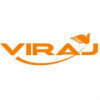Filter interviews by
Jindal Steel and Power Diploma Electrical Engineer Interview Questions, Process, and Tips
Jindal Steel and Power Diploma Electrical Engineer Interview Experiences
2 interviews found
I applied via Company Website and was interviewed in Sep 2024. There was 1 interview round.
(4 Questions)
- Q1. What are the different types of electric vehicle batteries, and how do they impact overall performance
- Ans.
Different types of electric vehicle batteries include lithium-ion, lead-acid, and nickel-metal hydride, each impacting performance in terms of energy density, weight, cost, and charging time.
Lithium-ion batteries are commonly used in electric vehicles due to their high energy density, lightweight, and long lifespan.
Lead-acid batteries are less expensive but heavier and have lower energy density compared to lithium-ion ...
- Q2. What are the different types of diodes
- Ans.
Different types of diodes include PN junction diode, Zener diode, Schottky diode, Light Emitting Diode (LED), and Photodiode.
PN junction diode: Basic type of diode used in most electronic circuits.
Zener diode: Used for voltage regulation and protection against overvoltage.
Schottky diode: Faster switching speed and lower forward voltage drop compared to PN junction diode.
Light Emitting Diode (LED): Emits light when curr...
- Q3. What are the different types of losses
- Ans.
Different types of losses in electrical engineering include copper losses, iron losses, stray losses, and mechanical losses.
Copper losses: Occur in the windings of electrical machines due to resistance in the copper wire.
Iron losses: Also known as core losses, occur in the magnetic core of transformers and machines due to hysteresis and eddy currents.
Stray losses: Occur due to leakage flux and eddy currents in the surr...
- Q4. Difference between AC and DC
- Ans.
AC stands for alternating current, which changes direction periodically, while DC stands for direct current, which flows in one direction constantly.
AC changes direction periodically, while DC flows in one direction constantly
AC is used in homes and businesses for powering electrical devices, while DC is used in batteries and electronic devices
AC can be easily converted to different voltages using transformers, while D
Interview Preparation Tips
I applied via Company Website and was interviewed in Jun 2023. There were 3 interview rounds.

(3 Questions)
- Q1. Electrical engineer...
- Q2. Plc... Electrical machine
- Q3. Plc electrical works
(2 Questions)
- Q1. Electrical works....plc
- Q2. Electrical machine....
Interview questions from similar companies

I applied via Company Website and was interviewed in Jul 2021. There was 1 interview round.
Interview Questionnaire
1 Question
- Q1. About Weighfeeder
Interview Preparation Tips

I applied via Campus Placement and was interviewed before Sep 2021. There were 2 interview rounds.
(1 Question)
- Q1. HR will ask you about their own company so before interview make sure you have atleast some knowledge of their company
(1 Question)
- Q1. You have explain about your area of interest because it's matter when your technical interview goes in the wrong direction
Interview Preparation Tips

I applied via Naukri.com and was interviewed in Feb 2021. There were 4 interview rounds.
Interview Questionnaire
1 Question
- Q1. Tell me about your self ?about your work ,some basics question for you technical feild.
Interview Preparation Tips

Interview Questionnaire
6 Questions
- Q1. 1.what is composite error and ratio error in current transformer?
- Ans.
Composite error and ratio error are two types of errors in current transformers.
Composite error is the combination of ratio error and phase angle error in a current transformer.
Ratio error is the difference between the actual turns ratio and the specified turns ratio of a current transformer.
Phase angle error is the angular difference between the primary and secondary currents of a current transformer.
Composite error a...
- Q2. 2.Draw ckt diagram of a.c drive.
- Ans.
An AC drive circuit diagram controls the speed of an AC motor by varying the frequency and voltage of the power supplied to it.
An AC drive consists of a rectifier, DC link, inverter, and control circuitry.
The rectifier converts AC power to DC power, which is stored in the DC link.
The inverter converts the DC power back to AC power with variable frequency and voltage.
The control circuitry adjusts the frequency and volta...
- Q3. 3.Draw single line diagram of distribution system with proper secification.
- Ans.
A single line diagram of a distribution system is required with proper specifications.
The diagram should show the flow of power from the source to the load
It should include all components such as transformers, switchgear, and cables
The specifications should include voltage levels, power ratings, and protection devices
The diagram should follow standard symbols and conventions
Example: A 11 kV distribution system with a 5
- Q4. 4.Why do the dewpoint test in transformer?
- Ans.
Dewpoint test is done in transformer to check the moisture content in the insulation oil.
Moisture in insulation oil can cause breakdown of transformer insulation
Dewpoint test helps to determine the moisture content in the oil
It is a preventive maintenance measure to avoid transformer failure
The test involves cooling a mirror until dew forms on it, and measuring the temperature at which dew forms
- Q5. 5.What is the difference between power transformer and distribution transformer?
- Ans.
Power transformers are used in transmission systems to step up or down voltage, while distribution transformers are used in distribution systems to step down voltage.
Power transformers are used in high voltage transmission systems to step up or down voltage for long distance transmission.
Distribution transformers are used in low voltage distribution systems to step down voltage for local distribution.
Power transformers...
- Q6. 6.How to work Buchholz relay in transformer.
- Ans.
Buchholz relay is used to protect transformers from faults by detecting gas and oil flow abnormalities.
Buchholz relay is installed in the pipe connecting the transformer tank and conservator tank.
It operates based on the principle that faults in the transformer generate gases and cause oil flow disturbances.
When gas or oil flow abnormalities occur, the relay trips and sends a signal to the control panel to isolate the ...
Interview Preparation Tips
Experience: My resume was shortlisted from naukri.com.

I applied via Company Website and was interviewed in Nov 2020. There were 3 interview rounds.
Interview Questionnaire
1 Question
- Q1. About electrical and from hbo operator plus transformer working principal
Interview Preparation Tips

I applied via Campus Placement

Easy can crack if u prepare
(2 Questions)
- Q1. Basic questions of hr
- Q2. Why should i hire you
Interview Preparation Tips

(3 Questions)
- Q1. Machine transmission distribution
- Q2. Electric generation
- Q3. Electric measurement
Interview Preparation Tips

Electrical Engineer Interview Questions & Answers
SHYAM METALICS AND ENERGYposted on 4 Nov 2023
I applied via LinkedIn and was interviewed in Oct 2023. There were 2 interview rounds.

(6 Questions)
- Q1. Genarator protection
- Q2. Transformer protection
- Q3. What is induction motor
- Ans.
An induction motor is a type of AC motor where power is supplied to the rotor by electromagnetic induction.
Induction motors are commonly used in various applications such as industrial machinery, pumps, fans, and compressors.
They do not require brushes to transfer power to the rotor, making them more reliable and maintenance-free compared to brushed DC motors.
The speed of an induction motor is determined by the frequen...
- Q4. Work principle transformer
- Q5. What is dc series motor
- Ans.
A DC series motor is a type of DC motor where the field winding is connected in series with the armature winding.
Field winding and armature winding are connected in series
High starting torque but low speed
Used in applications where high starting torque is required, such as in traction applications
- Q6. Grid to TG sync process
Interview Preparation Tips
Jindal Steel and Power Interview FAQs
Tell us how to improve this page.
Jindal Steel and Power Interviews By Designations
- Jindal Steel and Power Assistant Manager Interview Questions
- Jindal Steel and Power Junior Engineer Interview Questions
- Jindal Steel and Power Graduate Engineer Trainee (Get) Interview Questions
- Jindal Steel and Power Deputy Manager Interview Questions
- Jindal Steel and Power Electrical Engineer Interview Questions
- Jindal Steel and Power Electrician Interview Questions
- Jindal Steel and Power Production Engineer Interview Questions
- Jindal Steel and Power Summer Intern Interview Questions
- Show more
Interview Questions for Popular Designations
- Diploma Mechanical Engineer Interview Questions
- Diploma Trainee Engineer Interview Questions
- Diploma Civil Engineer Interview Questions
- Diploma Electronics Engineer Interview Questions
- Diploma Apprentice Trainee Interview Questions
- Diploma Chemical Engineer Interview Questions
- Diploma Automobile Engineer Interview Questions
- Diploma Engineer Trainee - DET Interview Questions
- Show more
Jindal Steel and Power Diploma Electrical Engineer Interview Process
based on 3 interviews
Interview experience
Diploma Electrical Engineer Interview Questions from Similar Companies
Fast track your campus placements
Jindal Steel and Power Diploma Electrical Engineer Reviews and Ratings
based on 8 reviews
Rating in categories
|
Assistant Manager
2.3k
salaries
| ₹4.2 L/yr - ₹13.6 L/yr |
|
Deputy Manager
1.1k
salaries
| ₹5.7 L/yr - ₹18.4 L/yr |
|
Junior Engineer
1k
salaries
| ₹1.8 L/yr - ₹5.6 L/yr |
|
Assistant Engineer
839
salaries
| ₹2.4 L/yr - ₹8.5 L/yr |
|
Manager
627
salaries
| ₹9 L/yr - ₹24.2 L/yr |

Tata Steel

JSW Steel

Jindal Stainless

Jindal Saw
- Home >
- Interviews >
- Jindal Steel and Power Interview Questions >
- Jindal Steel and Power Diploma Electrical Engineer Interview Questions


















